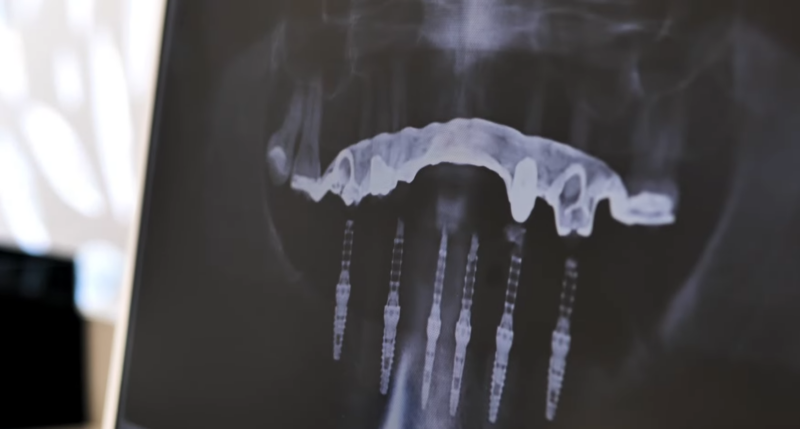Dental imaging is crucial for accurate diagnosis and effective treatment in modern dentistry.
AI enhances these imaging technologies, improving diagnostic accuracy, patient communication, and personalized care.
Let us talk about it.
AI-Assisted Diagnostic Accuracy

AI has revolutionized diagnostic accuracy in dental imaging. Advanced algorithms are trained to identify minute dental features and various pathologies that may be challenging for the human eye to detect.
Enhanced precision reduces the likelihood of missed diagnoses, allowing for timely and accurate identification of dental issues.
One of the significant advantages of AI-assisted diagnostics is its ability to detect early-stage dental diseases.
For instance, early detection of caries (cavities) can prevent the progression to more severe decay, thereby preserving more of the natural tooth structure.
Similarly, early identification of periodontal disease can lead to interventions that prevent tooth loss and other complications.
AI algorithms analyze vast amounts of data from images, learning to recognize patterns and anomalies with high accuracy.
The capability not only improves diagnostic outcomes but also aids in standardizing diagnoses across different practitioners and practices. The result is a more consistent and reliable diagnostic process, enhancing overall patient care.
Moreover, the integration of AI in diagnostic processes can significantly reduce the time required to analyze images, allowing professionals to focus more on patient interaction and treatment planning.
Enhancing Patient Communication
AI plays a crucial role in improving patient communication and understanding in dental care.
Traditionally, explaining complex conditions to patients could be challenging due to the technical nature of dental terminology and the difficulty in visualizing the issues.
However, AI has made it possible to bridge this communication gap effectively.
AI-powered imaging tools can generate enhanced visualizations of dental issues, making it easier for patients to understand their conditions.
These tools can highlight specific problem areas in the images, such as cavities, gum disease, or other abnormalities, providing a clear visual representation that complements the dentist’s explanation.
Furthermore, AI can assist in creating customized educational materials for patients.
These materials can include 3D models, animations, and interactive diagrams that explain various procedures and their benefits.
Such resources are invaluable for patient education, as they can revisit these materials at their own pace, enhancing their understanding and comfort level with the proposed treatments.
Enhanced patient communication through AI also leads to increased treatment acceptance.
When patients have a clear understanding of their dental conditions and the recommended treatments, they are more likely to comply with the treatment plans.
Integration of Cloud-Based Technologies
The integration of cloud-based technologies in dental imaging has revolutionized the way patient data is accessed, stored, and shared.
Cloud-based imaging software offers numerous advantages, including enhanced collaboration among dental professionals and improved efficiency in diagnosis and treatment planning.
One of the primary benefits of cloud-based technologies is the ease of access to patient data. Dental professionals can access imaging files from any location, allowing for more flexible and timely consultations.
It is particularly beneficial in multi-location practices or when specialists need to review images and provide input on treatment plans.
the ability to access images remotely ensures that patients receive the best possible care without unnecessary delays.
Collaboration among dental professionals is significantly improved with cloud-based imaging. Dentists, orthodontists, periodontists, and other specialists can easily share imaging files and collaborate on complex cases.
The approach leads to more comprehensive treatment plans and ensures that all aspects of a patient’s dental health are considered. The cloud platform also facilitates real-time discussions and consultations, enhancing the overall quality of care.
Additionally, cloud-based imaging software often comes with advanced security measures to protect patient data.
Encrypted storage and secure access protocols ensure that patient information remains confidential and compliant with regulations such as HIPAA.
CBCT and AI
Cone Beam Computed Tomography (CBCT) combined with AI represents a significant advancement in dental imaging.
CBCT provides high-resolution 3D images that offer a comprehensive view of dental structures, including teeth, bones, and soft tissues. This detailed imaging is invaluable for accurate diagnosis and effective treatment planning.
AI’s role in analyzing CBCT scans is transformative. Traditional 2D imaging often misses critical details that can be captured with CBCT. AI algorithms can process these 3D images, identifying hidden dental problems that might not be visible to the naked eye.
For example, AI can detect tiny fractures, cysts, or tumors that could be easily overlooked. The capability ensures that dental professionals have a complete understanding of a patient’s oral health, leading to more precise and effective treatments.
Moreover, AI-enhanced CBCT imaging aids in treatment planning and monitoring progress.
In orthodontics, for instance, AI can predict tooth movement and optimize brace adjustments. In implantology, AI can assist in planning the placement of dental implants with high precision, reducing the risk of complications and improving outcomes.
The ability to visualize the exact placement and integration of implants ensures a better fit and longevity.
Another significant advantage of AI in CBCT imaging is the ability to monitor the progress of treatments.
Regular CBCT scans analyzed by AI can track changes over time, allowing dental professionals to adjust treatment plans as needed.
The Bottom Line
AI’s integration with dental imaging enhances diagnostic accuracy, patient communication, and personalized care.
AI’s impact on dental imaging will likely grow, promising even better outcomes and transforming oral healthcare.

